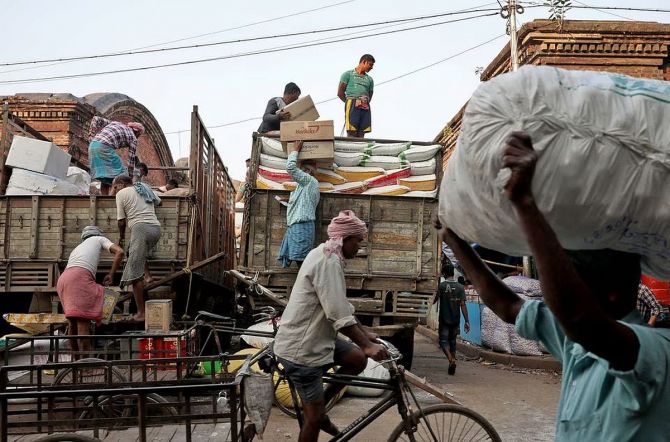India, Indonesia to replace China as Asia’s key growth driver: Morgan Stanley, Nomura
India, along with Southeast Asian countries such as Indonesia, is expected to sustain growth in the medium-term in Asia region, replacing China as the key growth driver, Morgan Stanley and Nomura said in two separate reports released on Monday.
While Morgan Stanley projected a 6.2 per cent gross domestic product (GDP) growth forecast for India in FY24, Nomura estimated the Indian economy to grow at 5.9 per cent in 2023.
“Even with a slowing China, we expect GDP growth in Asia to sustainably outperform other emerging markets and the US. India and Southeast Asia are set to be the fastest-growing economies this decade.
“Asia’s flying geese model is once again in action,” Nomura said in a global markets research report.
In its global economics mid-year outlook, Morgan Stanley said: “China’s recovery should support regional strength on a cyclical basis, but medium-term strength comes from India and Indonesia.
“Other emerging markets are forecast to remain subdued, though we see growth improving in most economies in 2024 as real rates edge down and domestic demand recovers.”
Morgan Stanley said India’s recovery was being driven by a confluence of cyclical and structural tailwinds like stronger balance sheets, improved macro stability, and broad-based improvement in consumption and capital formation.
The high-frequency data shows broad-based recovery with real credit growth at 12.6 per cent, real GST collections rising 8.8 per cent, services PMI at a 13-year high, and services exports tracking at an all-time high, the Morgan Stanley report notes.
“In India, we expect domestic demand to be the key growth driver and anticipate broad-based improvement in consumption and capital formation,” the report said.
Besides, the Morgan Stanley report also notes that in India, the upside scenario is being driven by improvement in external demand, which is feeding into export growth and a quicker recovery in private capital expenditure (capex), as a combination of robust domestic and external demand, along with steady capex momentum, is likely to push growth higher.
“On the consumption side, a healthy trend in labour market conditions and concomitantly improving consumer sentiment bode well for the recovery to continue.
“Capex is being supported by fundamentally strong private sector balance sheets, a pick-up in government capital expenditure, and supply side-focused policy measures which are improving the private capex outlook,” the Morgan Stanley report notes.
However, the report also notes that in India, a delay in the capex cycle could be affected by weaker business confidence and weaker external demand conditions.
“The possibility of a weaker-than-expected trend in domestic and external demand driven by tighter domestic and/or global financial conditions would weigh on capacity utilisation and push back the capex recovery,” the report added.
Further, the Morgan Stanley report forecasts that the Reserve Bank of India could embark on a shallow rate cut cycle of 50 basis points starting from first quarter in FY24, as inflation remains benign and the current account deficit stays within policymakers’ comfort range.
“Changes in global commodity prices and/or unfavourable weather conditions can pose idiosyncratic risks impacting growth and inflation adversely,” the report added.
Nomura, on the other hand, said reforms and higher capex should help India’s GDP growth reach around 6.6 per cent per annum over the medium term, and support the rupee.
“We see opportunities in infrastructure, financial and consumer discretionary sectors.
“The shifts in global supply chains are benefiting India and ASEAN.
“Public infrastructure spending is now a high priority in EM Asia. Digitalisation is enabling India to sustain its services-driven growth model,” it added.
Source: Read Full Article



